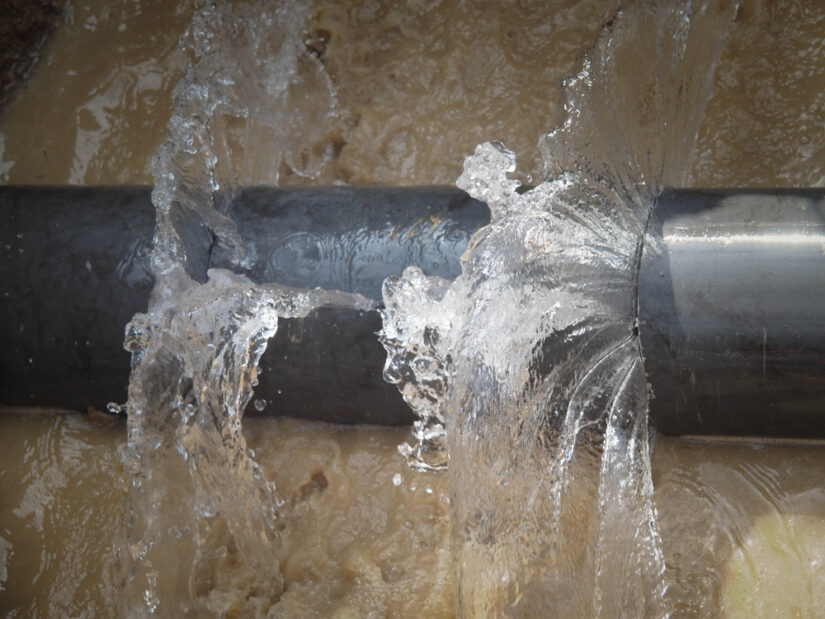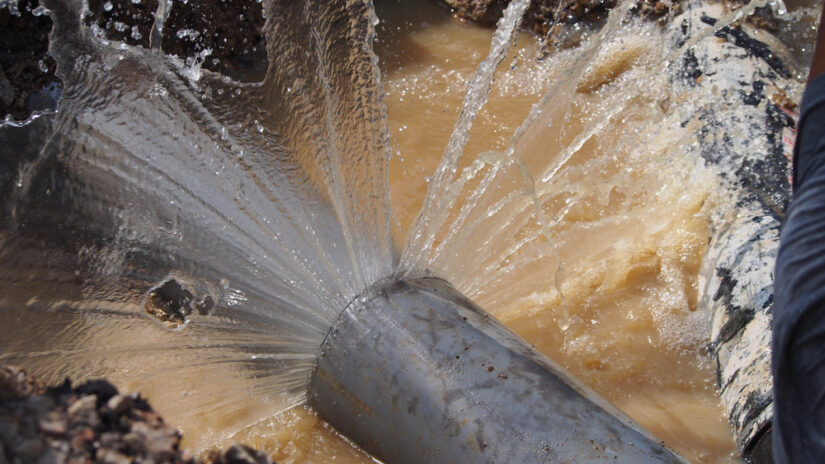
Water pipes can burst for various reasons, leading to significant damage and costly repairs. The most common causes include freezing temperatures, high water pressure, and corrosion within the pipes. Understanding these factors can help homeowners take preventive measures to protect their plumbing systems.
When temperatures drop, water inside pipes can freeze, causing them to expand and potentially rupture. Likewise, if water pressure exceeds the recommended levels, this strain can lead to pipe failure. Corrosion is another issue; over time, pipes can deteriorate, weakening their structure.
Understanding Pipe Bursts
Common Scenarios for Pipe Bursts
- Extreme Temperatures: Cold weather can cause water inside pipes to freeze. When ice forms, it expands, increasing pressure within the pipe. Once the ice thaws, the sudden release of pressure can lead to a burst.
- Corrosion: Over time, pipes can corrode due to age and environmental factors. This deterioration weakens the pipe wall, making it prone to leaks and bursts, especially under pressure fluctuations.
- High Water Pressure: Pipes are designed to handle specific pressure levels. When water pressure exceeds these limits, it can strain the pipes, eventually resulting in failure.
- Physical Damage: Pipes can be damaged by external forces, such as construction activities, tree roots, or shifting soil. Such damage can create vulnerabilities and lead to bursts.
- Improper Installation: Poorly installed pipes may not align correctly or be adequately secured. This improper setup increases the risk of leaks and bursts under normal conditions.
Contributing Factors to Pipe Bursts
Temperature Fluctuations and Ice Formation
Freezing temperatures are a major risk to pipes, particularly in regions that experience harsh winters. When water inside the pipes freezes, it expands. This expansion exerts immense pressure on the pipe walls. If the pressure exceeds the pipe’s capacity, it can crack or burst.
Insulation plays a crucial role in preventing freezing. Exposed pipes in unheated areas are at a greater risk. Homeowners should consider insulating the pipes or allowing a slow drip of water during extreme cold to reduce the likelihood of ice formation.
Aging and Wear and Tear
As plumbing systems age, they become susceptible to wear and tear. Materials like copper, PVC, and galvanized steel degrade over time due to constant exposure to water and pressure. This degradation can manifest as weak spots that are prone to bursting.
Additionally, older pipes may not meet current safety standards or building codes. Regular inspections can help identify signs of aging, such as leaks or corrosion. Timely replacement of aging pipes can prevent catastrophic failures.
Corrosion Impact
Corrosion poses a significant threat to the structural integrity of pipes. Various factors contribute to this issue, including the quality of the water supply and the materials used in the pipes. For instance, acidic water can accelerate corrosion, weakening pipes and making them more likely to rupture.
The presence of mineral deposits and rust inside the pipes can further exacerbate the problem. Homeowners can mitigate corrosion by using pipe lining techniques and selecting materials resistant to rust and decay, such as stainless steel or certain polymers.
Water Pressure and Hydraulic Shocks
High water pressure is another leading cause of pipe bursts. When pressure exceeds the design specifications of the plumbing system, it can lead to stress fractures. A sudden increase in pressure, known as hydraulic shock, can also create shock waves in the water, causing immediate damage.
To manage water pressure, homeowners should install pressure regulators to maintain appropriate levels. It is essential to regularly monitor water pressure, especially in older homes where systems may not have been designed to handle higher pressure levels.
Environmental and Ground Shift Factors
Environmental factors such as ground shifting and settling can impact the stability of pipes. Soil erosion or changes caused by construction activity can create movement that stresses plumbing systems. This movement may lead to fractures or disconnections in the piping.
It is important for homeowners to be aware of their local geology. Regular assessments of surrounding soil conditions can help identify potential risks, allowing for proactive measures to protect pipe integrity against ground shifts. Proper drainage systems can also alleviate some of these environmental pressures.
Preventative Measures
Insulation and Protective Coverings
Insulating pipes is crucial to prevent bursts during cold weather. Insulation helps maintain a stable temperature within pipes, reducing the risk of freezing. Foam pipe insulation sleeves are a practical option that can be easily installed and provide a protective barrier against temperature fluctuations.
Additionally, homeowners can employ heat tape or cables on exposed pipes, which use electrical components to keep pipes warm during extreme cold. It’s essential to ensure that insulation covers all areas, especially those near exterior walls or unheated spaces. A well-insulated plumbing system can lead to fewer emergencies and lower repair costs.

Regular Maintenance and Monitoring
Routine maintenance checks are vital in detecting potential issues before they escalate. Regular inspections can identify signs of wear, leaks, or corrosion in plumbing systems. Monitoring water pressure levels is equally important. High water pressure can stress pipes, leading to bursts. Installing a pressure gauge can help homeowners track this.
Scheduling annual plumbing inspections with a professional can provide additional assurance. Qualified plumbers can assess the integrity of pipes and recommend necessary repairs or modifications. Maintaining clear drainpipes also plays a role in prevention. Clogs can create pressure buildup, increasing the likelihood of pipe failures.
Upgrading Plumbing Systems
Upgrading old plumbing systems can effectively prevent pipe bursts. Materials such as copper and PEX (cross-linked polyethylene) are more resistant to pressure and temperature fluctuations than older materials.
Homeowners should consider replacing galvanized steel pipes, which can corrode and weaken over time. Renovating with modern materials enhances the overall durability and lifespan of plumbing infrastructure.
While upgrading can require an initial investment, the long-term savings from reduced maintenance costs and fewer emergencies often outweigh the expense. Investing in quality materials will lead to better performance and peace of mind.
Emergency Response and Repair
Immediate Steps Post-Burst
- Shut Off Water Supply: The first action should be turning off the main water supply to prevent further leakage. Locate the shut-off valve, which is often near the water meter.
- Drain Remaining Water: Open faucets in the house to drain any remaining water from the pipes. This step helps relieve pressure and can reduce flooding.
- Inspect for Damage: Check the area around the burst pipe for visible water damage. Look for signs of flooding, mold, or structural damage.
- Collect Water: Use buckets, towels, or a wet vacuum to collect and remove standing water. This helps in minimizing damage to flooring and walls.
- Call for Help: After managing immediate concerns, contacting a plumbing professional is critical. They can assess and repair the damage properly.
Got Rot’s Solutions for Repair and Maintenance
Got Rot offers comprehensive plumbing solutions for individuals facing burst pipes.
- Repair Services: We provide emergency repair services that address minor leaks and major bursts quickly. Our team is trained in efficient techniques to restore plumbing integrity.
- Replacement Options: If a pipe is beyond repair, Got Rot can recommend suitable replacement materials. These could include modern PEX or PVC pipes that offer enhanced durability.
- Maintenance Programs: Promoting long-term health of plumbing systems, Got Rot also offers maintenance services. Regular inspections can identify potential failures before they escalate into emergencies.